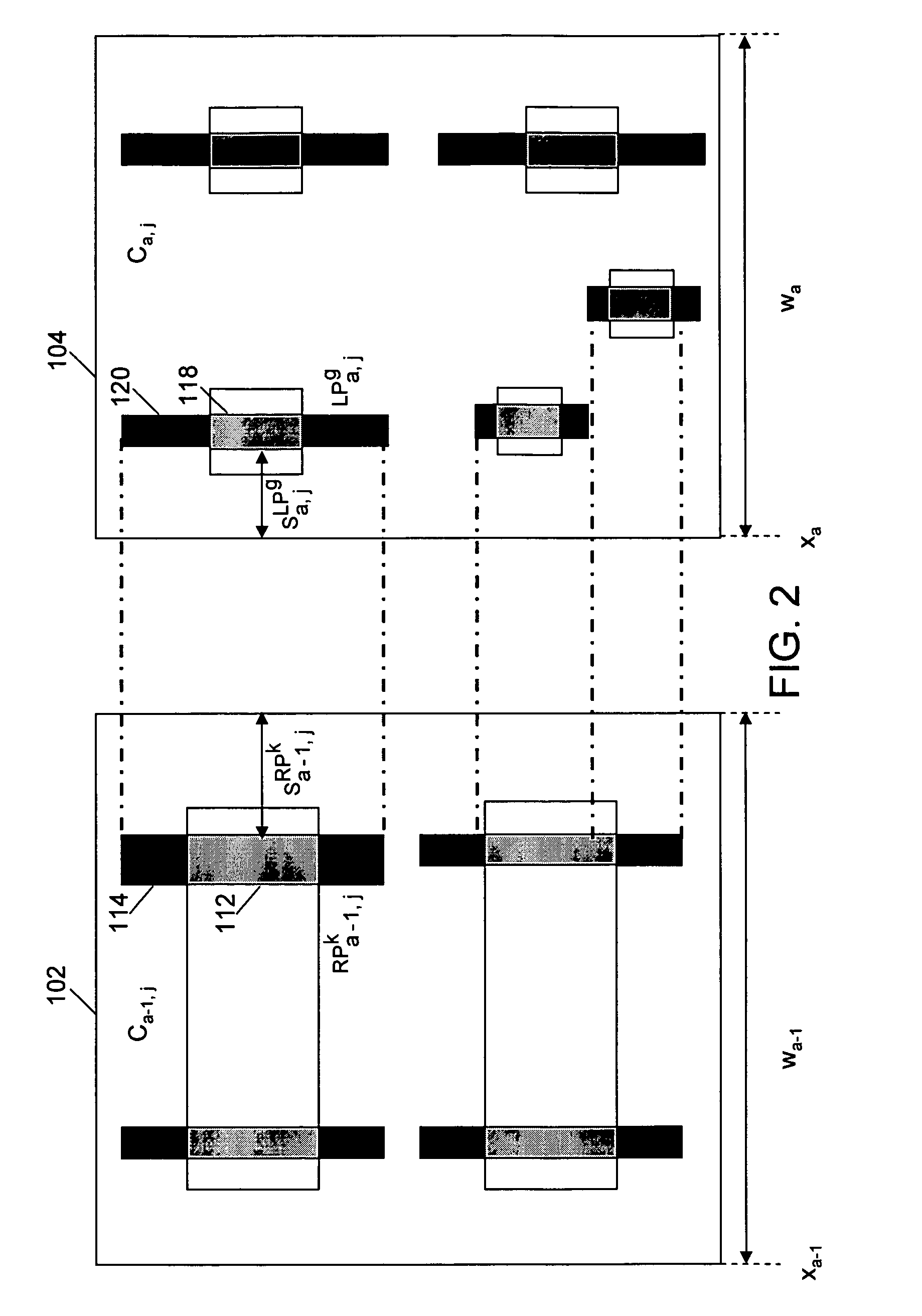Method and system for placing layout objects in a standard-cell layout
a layout object and layout technology, applied in the field of standard-cell layout designs, can solve the problems of small focus/process window depth, poor lithographic response, unwanted printing of srafs on the wafer, etc., and achieve the effect of reducing cd errors
- Summary
- Abstract
- Description
- Claims
- Application Information
AI Technical Summary
Benefits of technology
Problems solved by technology
Method used
Image
Examples
Embodiment Construction
[0027]Various embodiments of the present invention relate to a method and system for detailed placement of layout objects in a standard-cell layout design. A standard-cell layout generated in accordance with various embodiments of the present invention can be used to prepare a photolithography mask that offers improved lithographic characteristics. The lithographic mask can then be used to manufacture an integrated circuit. Layout objects are design objects that need to be positioned in a standard-cell layout design according to specific rules. Layout objects include traditional design objects such as cells. Typically, placement of a cell is chosen by a physical design tool. Exemplary physical design tools include Astro™ from Synopsys and SOC Encounter™ from Cadence. Each cell can further include a plurality of polysilicon shapes and their active-layer shapes. Each of the plurality of polysilicon shapes can include a plurality of gate polysilicon shapes (that is to say, transistor g...
PUM
| Property | Measurement | Unit |
|---|---|---|
| distance | aaaaa | aaaaa |
| critical dimensions | aaaaa | aaaaa |
| shape | aaaaa | aaaaa |
Abstract
Description
Claims
Application Information
 Login to View More
Login to View More - R&D
- Intellectual Property
- Life Sciences
- Materials
- Tech Scout
- Unparalleled Data Quality
- Higher Quality Content
- 60% Fewer Hallucinations
Browse by: Latest US Patents, China's latest patents, Technical Efficacy Thesaurus, Application Domain, Technology Topic, Popular Technical Reports.
© 2025 PatSnap. All rights reserved.Legal|Privacy policy|Modern Slavery Act Transparency Statement|Sitemap|About US| Contact US: help@patsnap.com



